I finally got the cardboard down on the front yard. For a while there, the Vintage front yard looked a little trashy. I am sure that the neighbors were growing concerned. But now that I have covered the cardboard with mulch, the yard looks a little better. By early June, the grass underneath should be dead, and I’ll be able to start planting.
The neighbors are probably still a little concerned. Hopefully, they will be mollified once the project is complete.
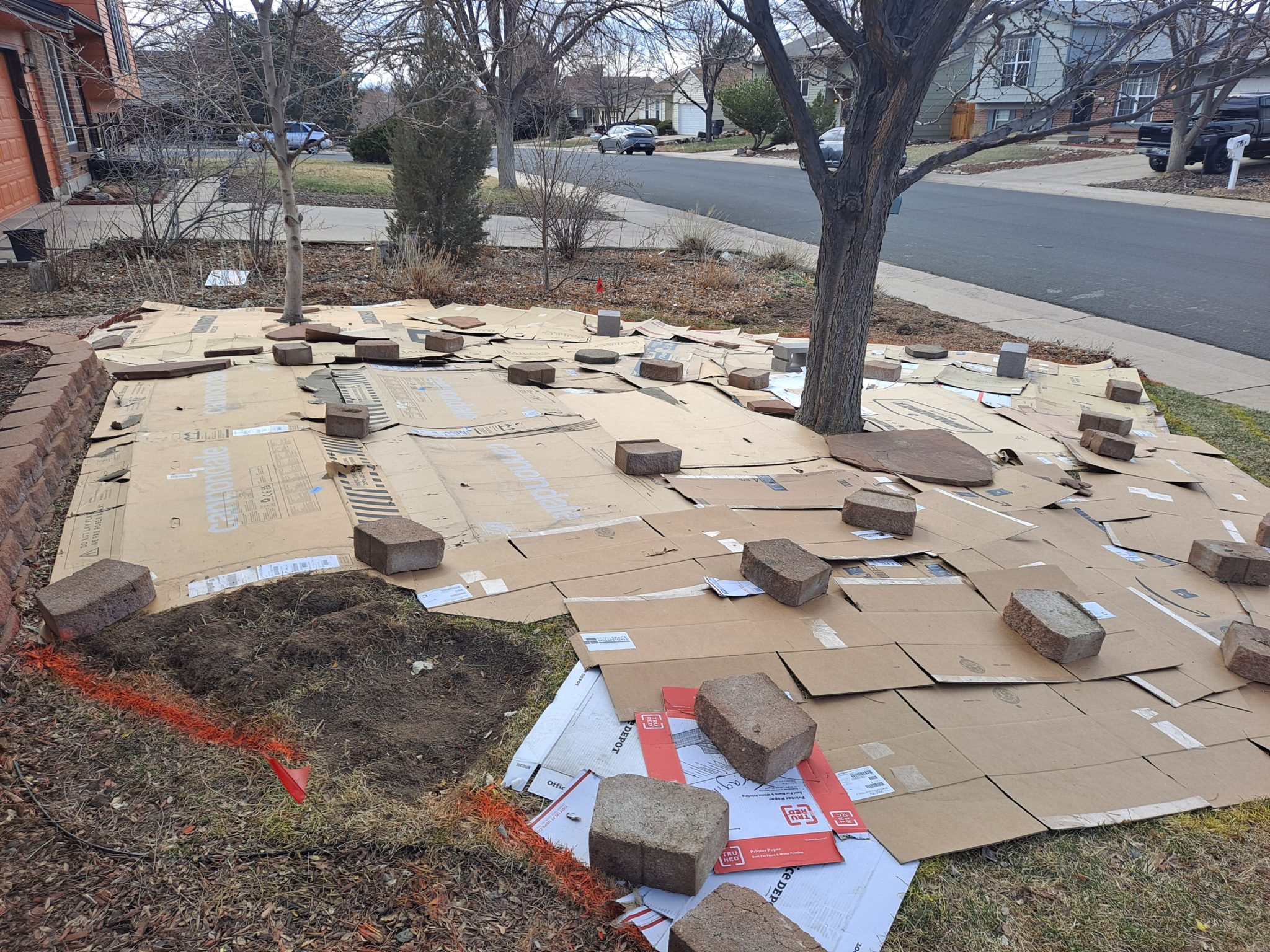
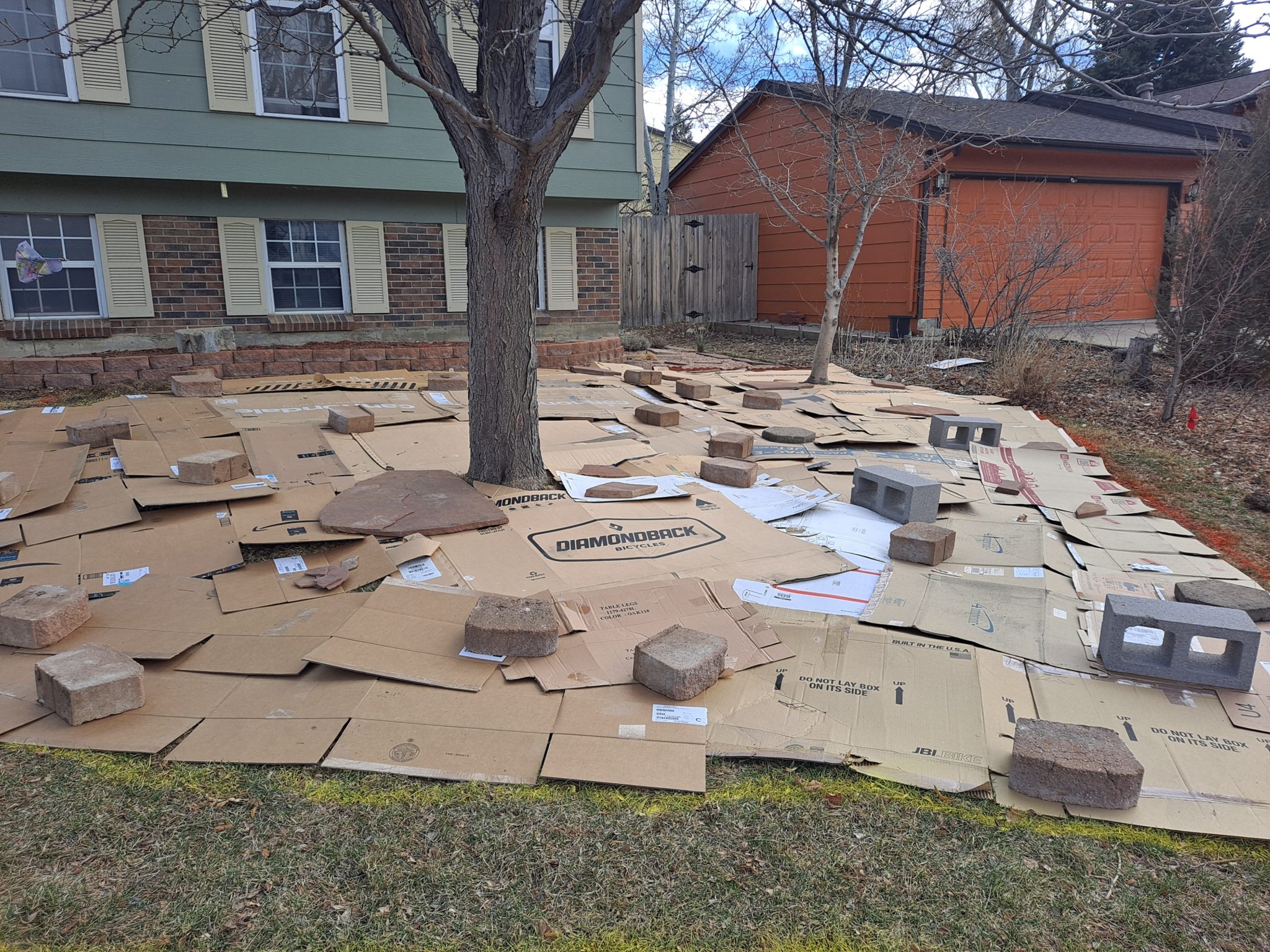
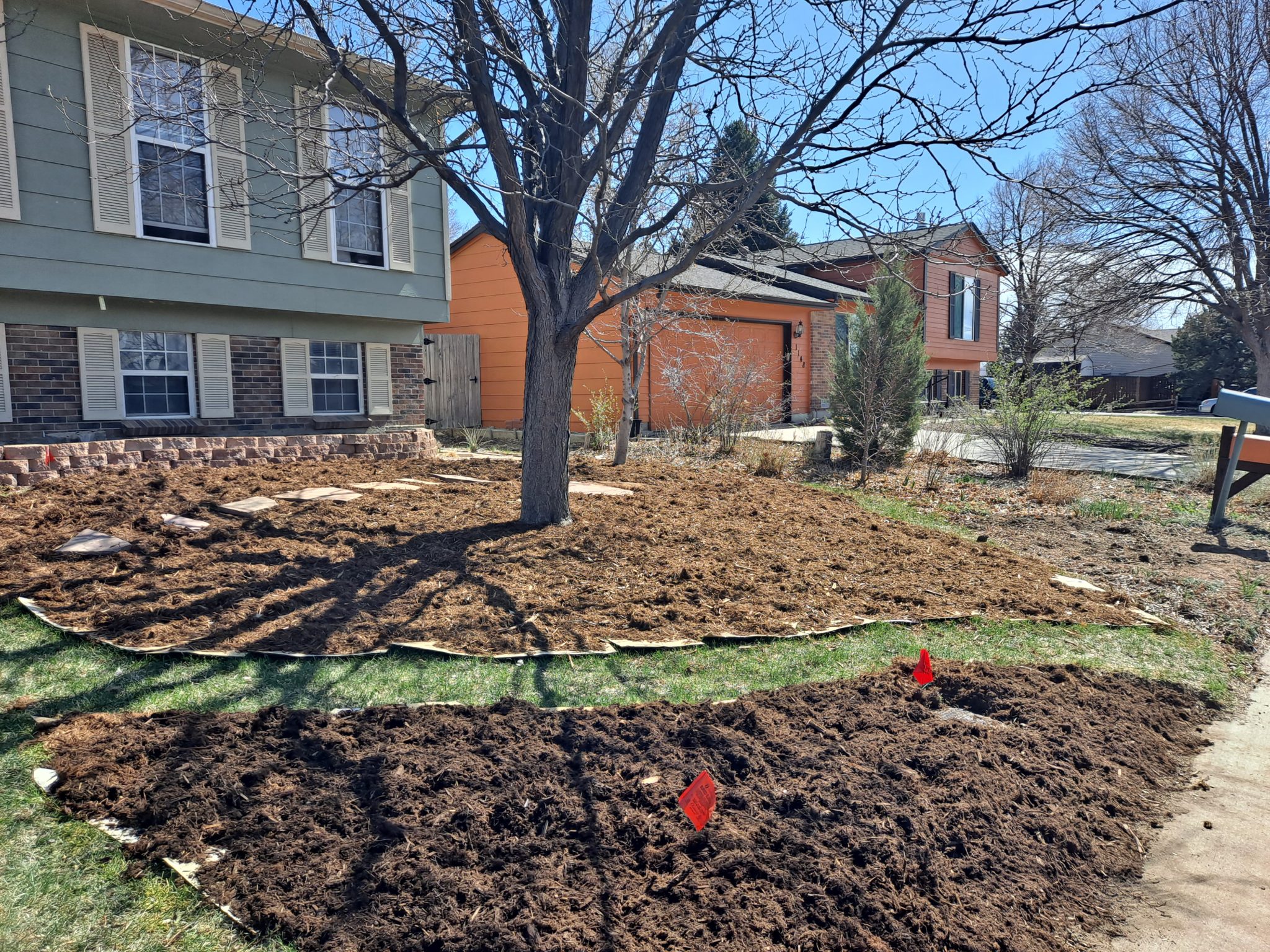
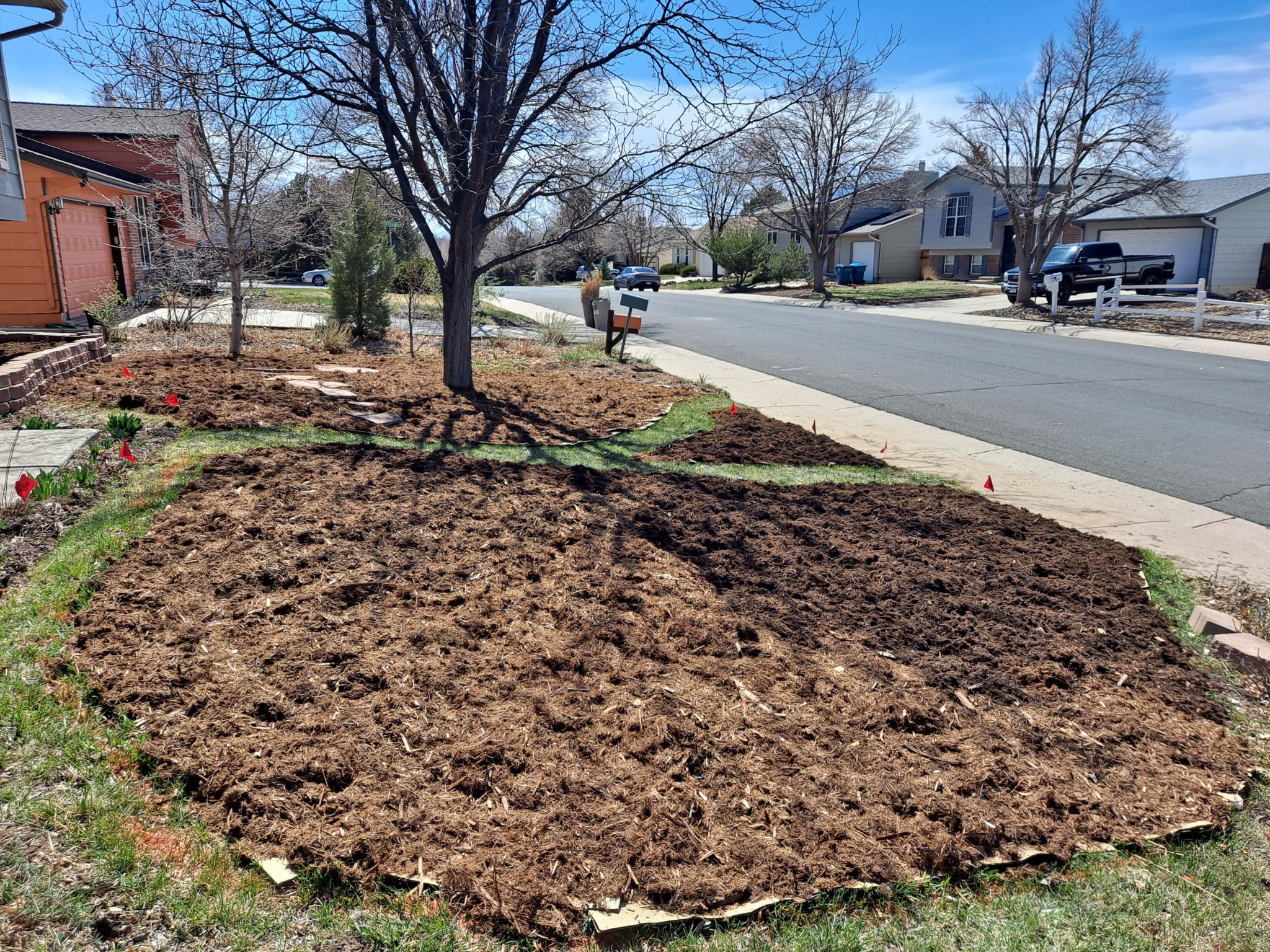
Then next step is to install metal edging around the new borders and along the future path. Then the real backbreaking labor begins: digging out the remaining lawn and old garden beds. Much swearing, sweating and cursing is in my future.
I’m going to try and salvage as many plants from the front yard as I can. Plants these days ain’t cheap. I’ve already dug out and divided feather reed grass ‘Karl Foerster’. I’ve planted 12 of the divisions in various containers, where they will bid their time until the front yard is ready for their permanent home. I don’t need 12, but better safe than sorry. Besides, I am sure I will find a place for the ones that don’t make it into the front yard.
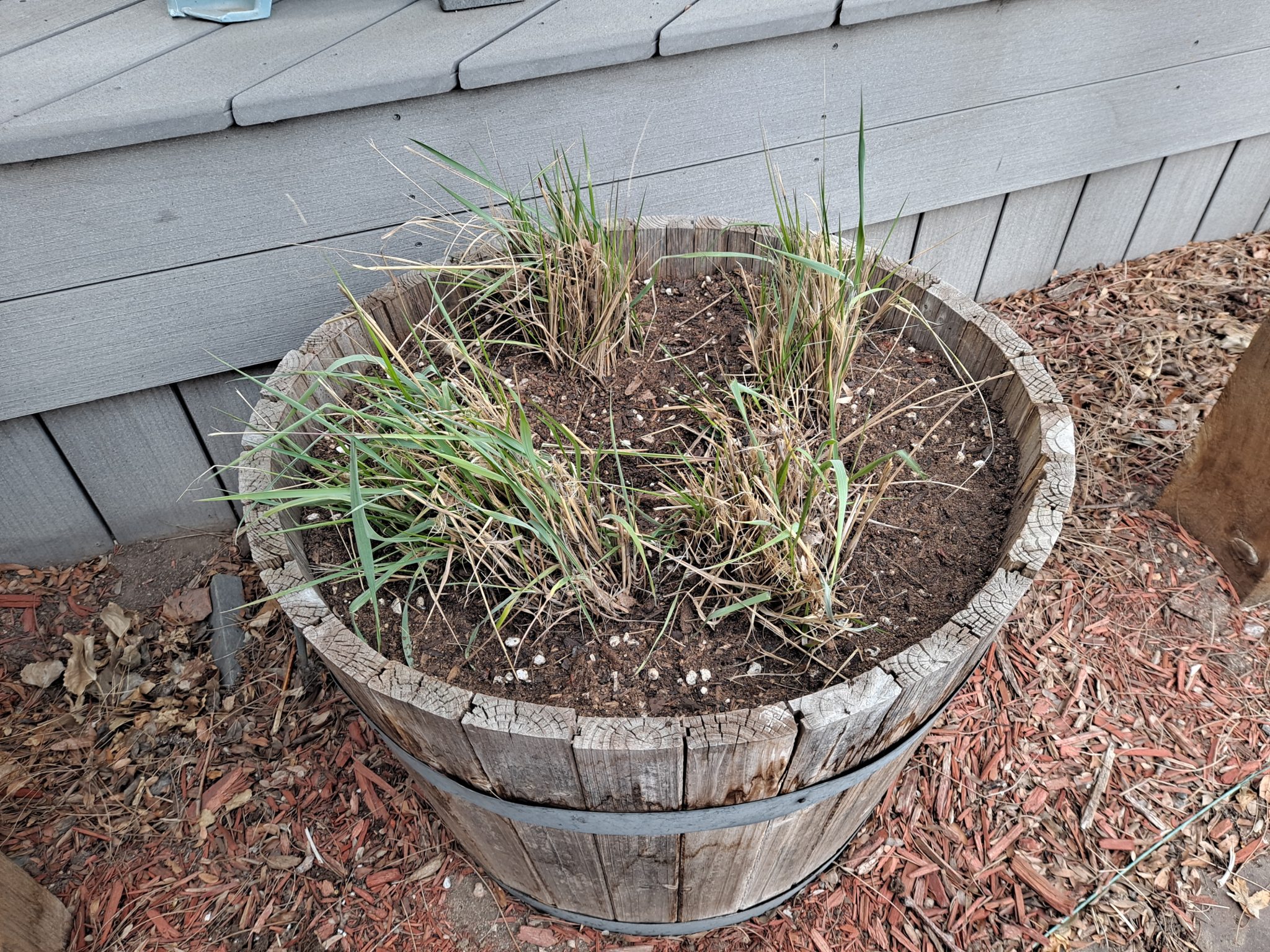
The garden stirs
It always amazes me just how fast things change in the garden during the month of April. At the beginning of the month, there are just hints that things are coming back to life. By the middle of the month, tulips, daffodils and hyacinths are already starting to bloom.
Other signs of life are appearing as well. Buds are starting to swell on trees and shrubs. Cool season grasses, such as feather reed grass, are already sending the shoots skyward. Where I live, April is the month of boundless optimism in the garden.
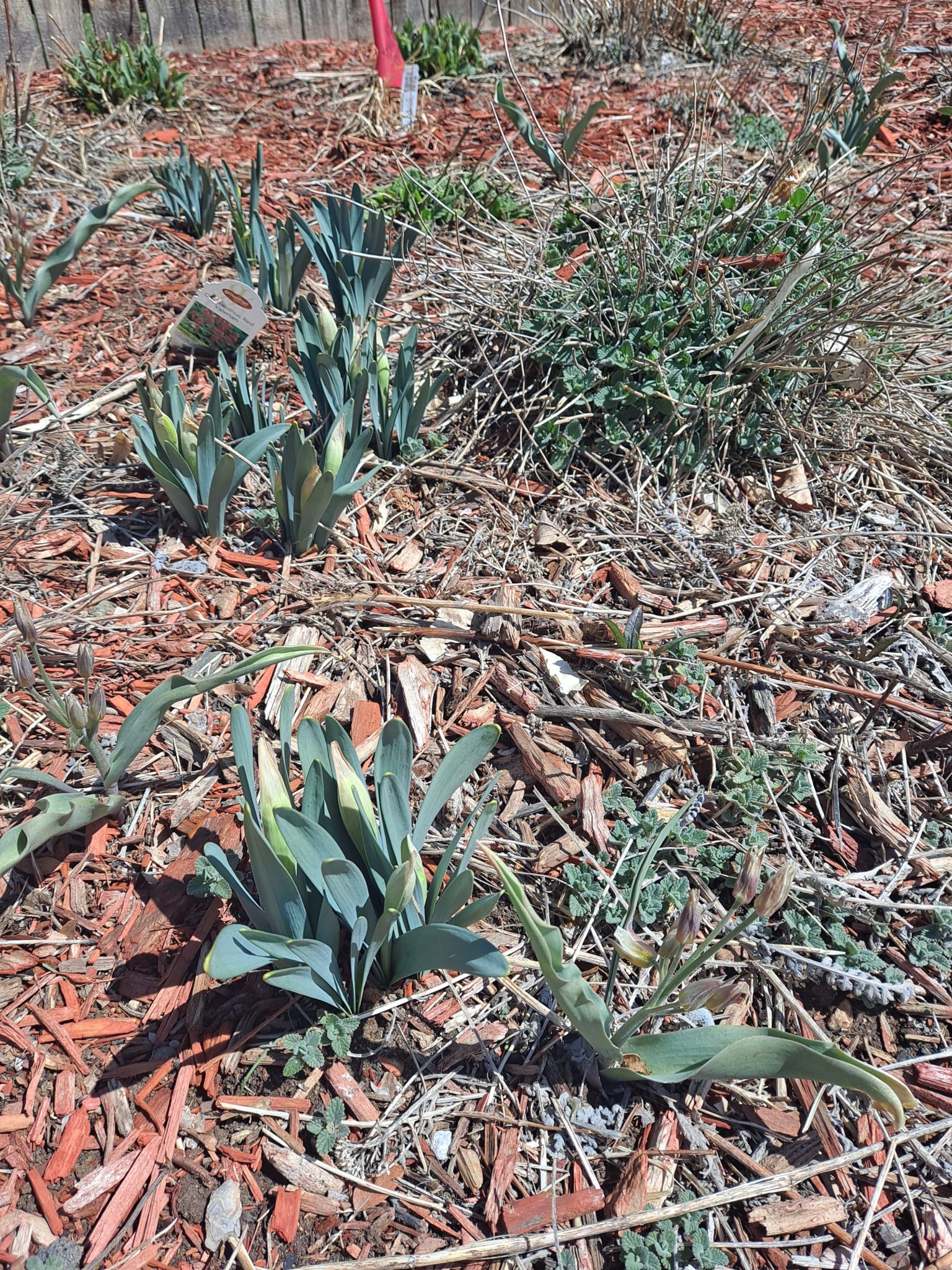
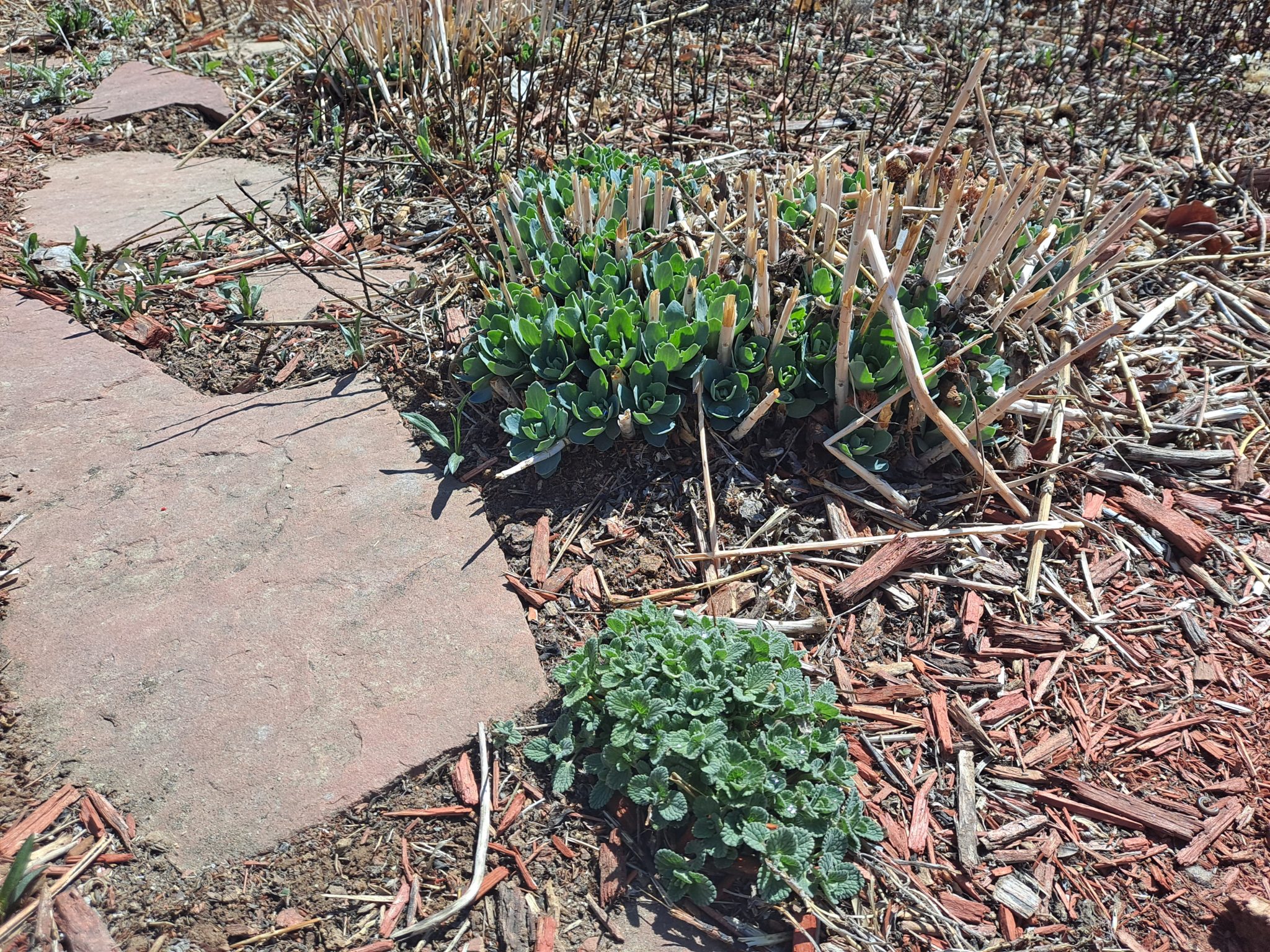
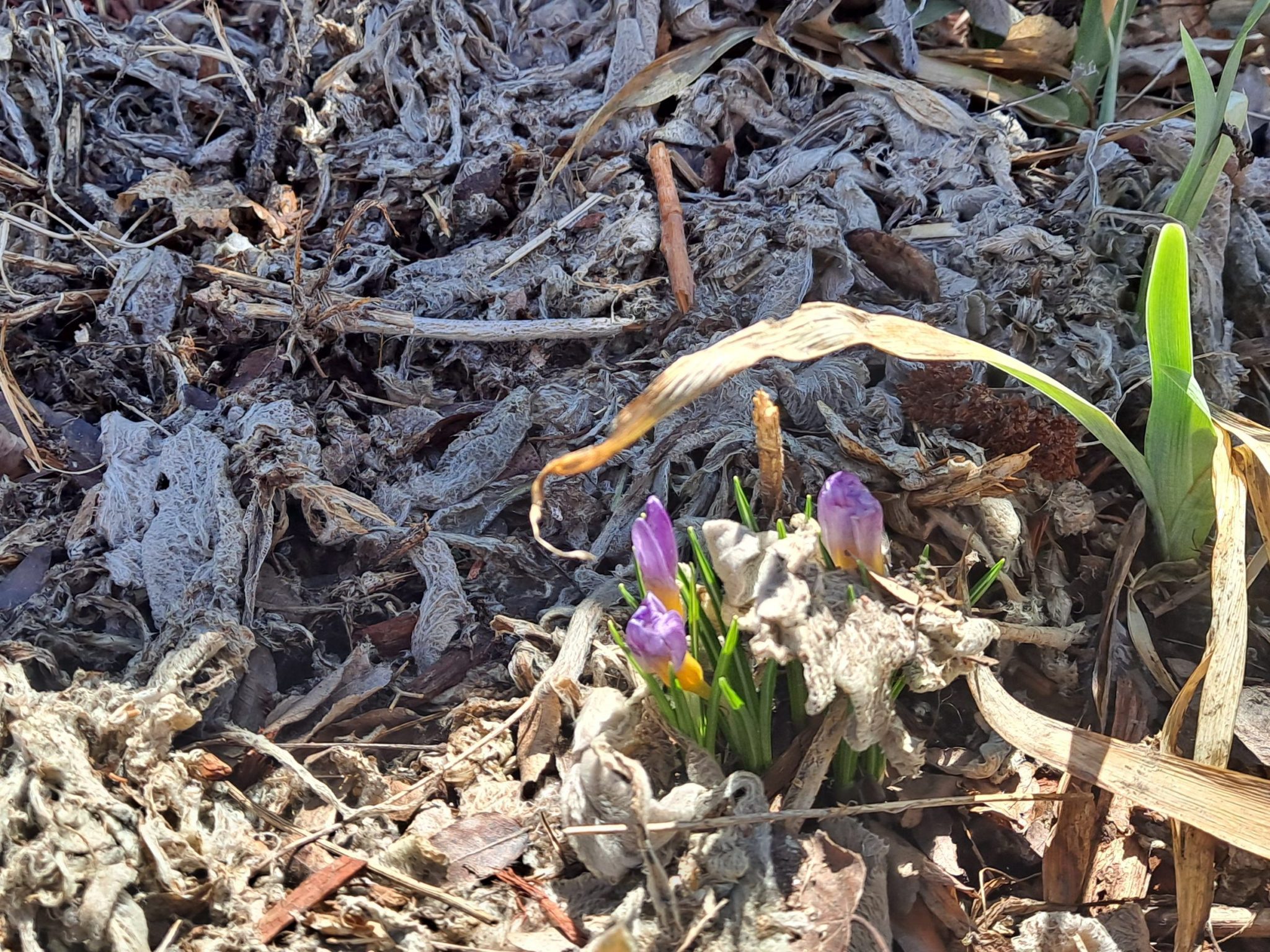
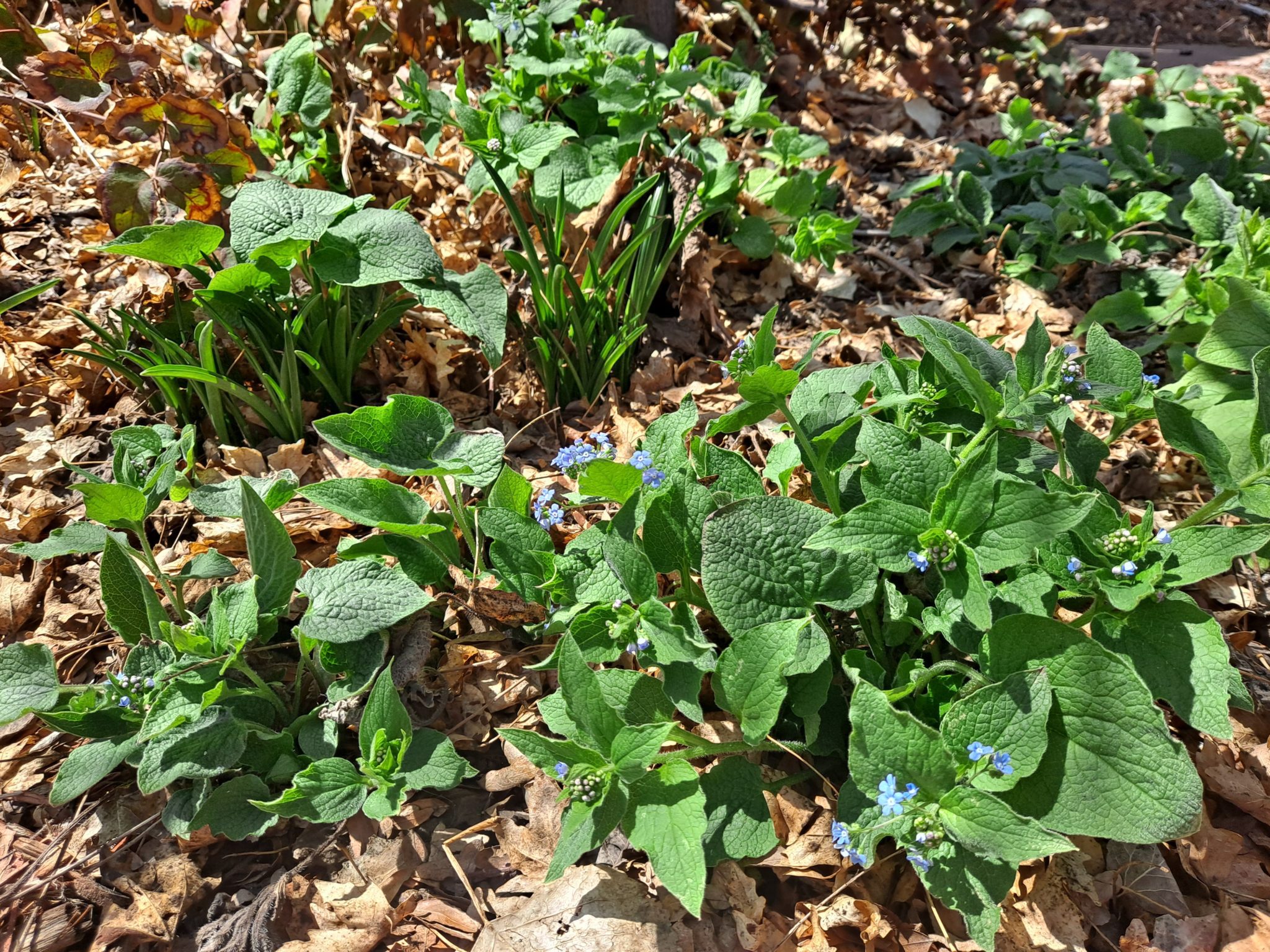
Species tulips
Last autumn, I planted some species tulips in the old veggie garden. Species tulips are different from the hybrid tulips that are commonly planted in most landscapes. The positive for hybrid tulips is that their blooms are generally big and dramatic.
One downside with most hybrid tulips is that they don’t live that long. The first year they bloom great. The second year, not so impressive. Eventually they just peter out and disappear.
Species tulips are closer genetically to the original tulips from centuries ago, before humans started monkeying around with them. While their flowers tend to be small, species tulips are hardy, they rebloom reliably year after year, and they gradually spread out (naturalize). I’ve never grown species tulips before. But I am quite pleased with the results.
As time goes on, I’ll plant more of these tulips, and eventually the display will become more impressive.
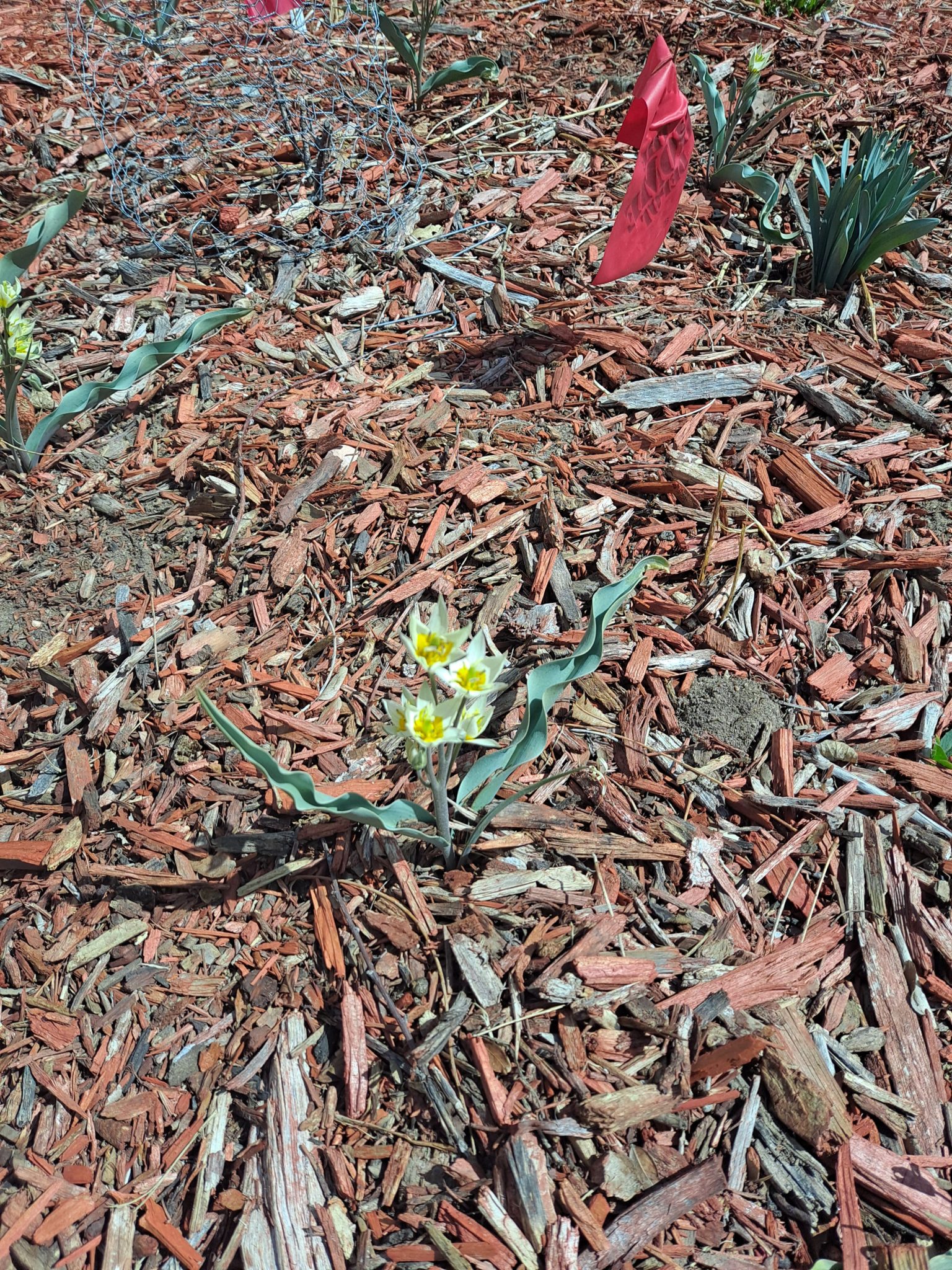
A success story
Finally, we come to the matter of MrsVintage’s peony. Years ago, MrsVintage was given a division of her grandmother’s peony. We planted it next to the front door and for a long time it did just fine there. But as the years passed, the honey locust in the front grew big and it started shading out the peony. The peony continued to do alright; it bloomed every year, if less robustly than it used to.
Last autumn, realizing that the front door area was going to be razed to make room for the waterwise renovation, I divided the peony and put the divisions in the backyard next to the birdbath. Hopefully in its new and sunnier location it will return to its former glory. I’ll be honest, moving this plant really stressed me out. I was absolutely convinced that I had killed it.
I am happy to report that the peony apparently doing fine and is sending out spears of new growth. Hallelujah!
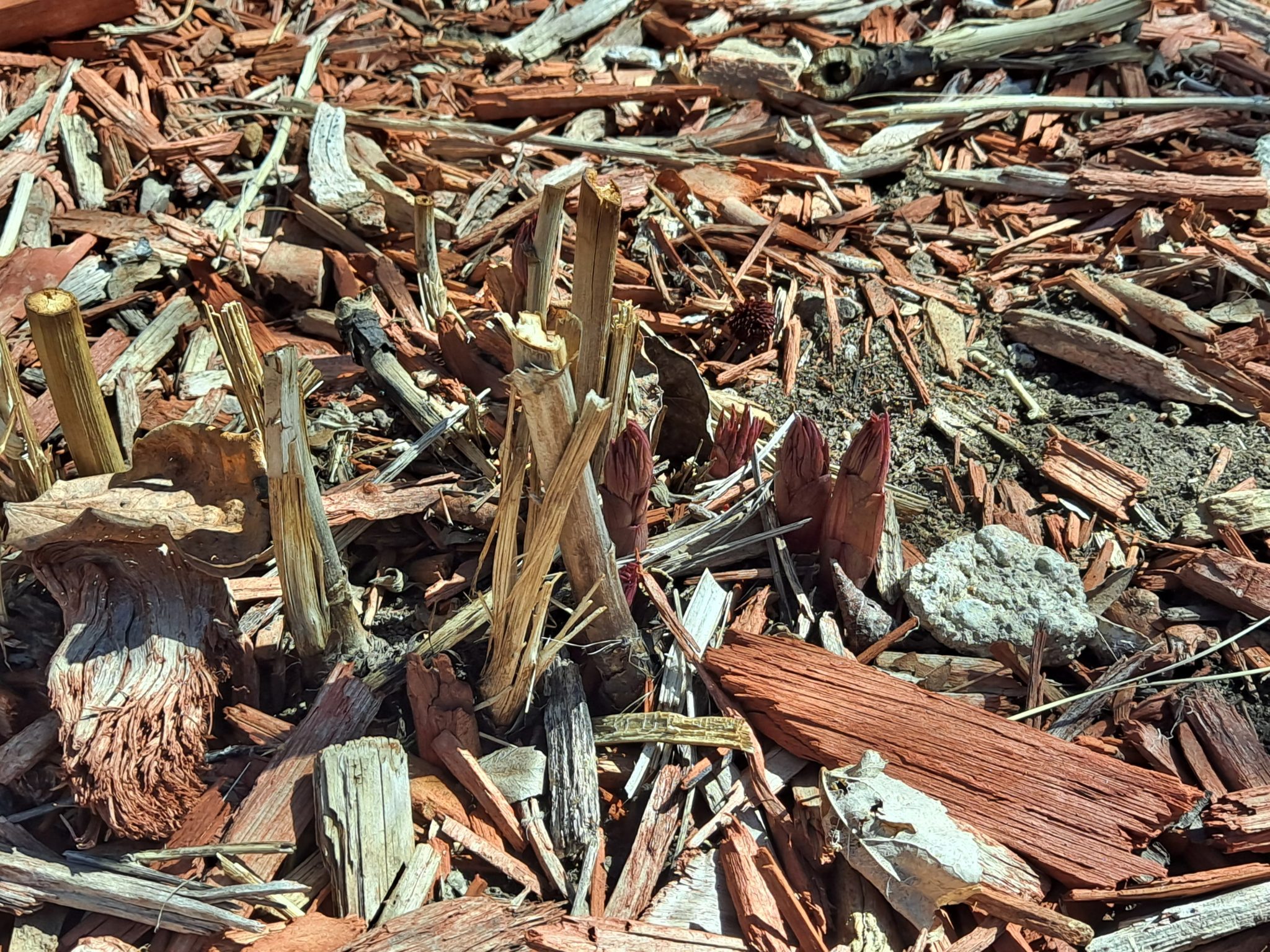
Stay tuned for further updates on the front yard renovation.

